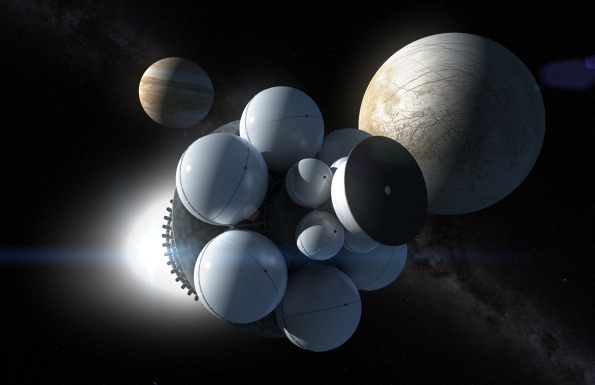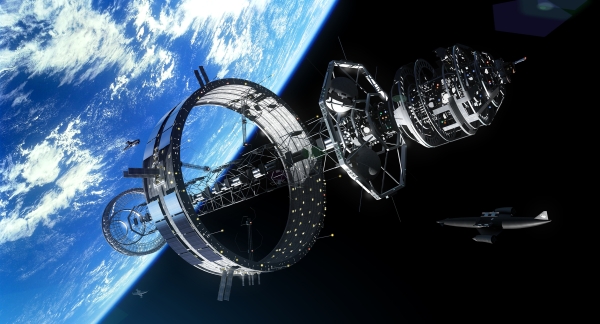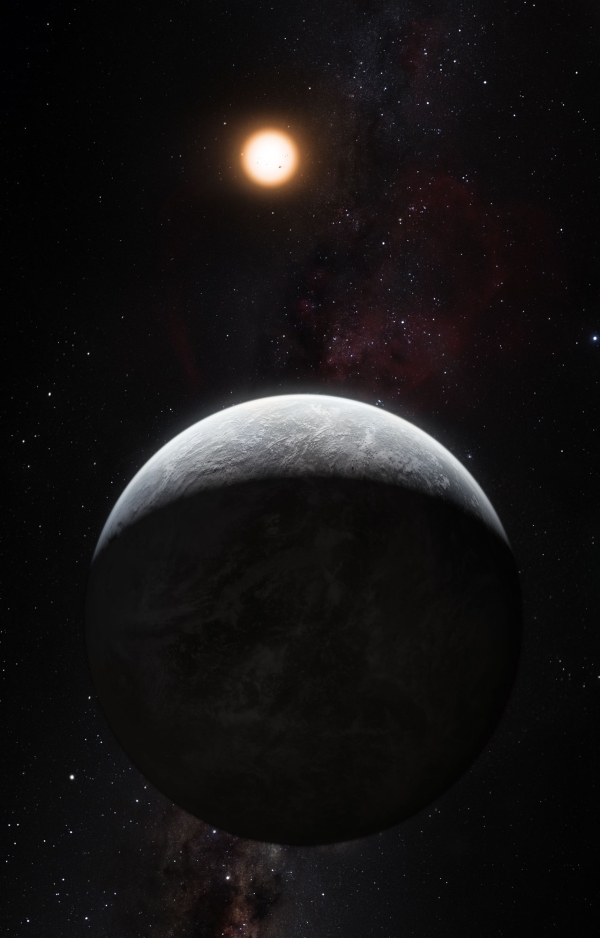Report
By Keith Cooper
- Published: Saturday, January 11 2014 10:04

I distinctly remember the first time that I saw space art as a child. It wasn’t artwork of the moon or planets, nor was it of distant stars and galaxies, or even of people working in Earth orbit. It was Chris Foss’ book, ‘21st Century Foss’ and it still influences the way I think about space today.
Foss, a British artist, paints science fiction art of vast starships with vibrant colour and shape cruising through the cosmos. It went far beyond the science fiction of the silver screen and in the vistas that Foss depicted almost anything seemed possible. The world of his paintings was not the realm of real things, but of imaginary things, of things that are not yet but could one day be. It’s that aspect, the role of imagination and of the future, that has shaped my interest in astronomy and in space flight and which has led me today to work for the Institute for Interstellar Studies, which in shorthand we call I4IS.
Our goal, to put it succinctly, is to engineer a future where interstellar flight is possible. Not necessarily a future like ‘Star Trek’, where flying to another star seems as routine as taking a drive down to the local supermarket, but a future where it is feasible to reach the nearest stars with flight times of a century or less. It is not going to be an easy task – the technology and resources are currently beyond us, but they are not impossible. The laws of physics do not preclude interstellar flight – engineering studies such as the British Interplanetary Society’s Project Daedalus in the 1970s have proven that. I4IS and other similar organisations aim to create a framework for rigorous scientific and engineering research that can develop the technologies that will one day take us to the stars.
It’s not all equations and experiments, however. In the 1940s and 50s Chesley Bonestall’s space art helped to sell a future in space to the public, depicting in particular the grand plans that Werner von Braun had for the colonisation of the Moon and Mars. Similarly, space art today can help depict a future of interstellar flight. In doing so can also show a positive future for humanity in space and, as a result, on Earth. We can talk about the journey, about the building of a huge starship, about the technology that will power it and propel it, about the long journey whether the starship be manned or unmanned, and about the exotic discoveries it could make along the way and at its destination of a faraway exoplanet orbiting an alien sun. To many people, however, this can seem abstract. It can be hard to visualise, never mind believe. Unlike Solar System flight, where we have real images of the planets from robotic craft and photographs of men and women working in Earth orbit or standing on the Moon, there is nothing to visually depict interstellar flight – except art.
Space art can be a powerful cultural tool for promoting space flight. It can show things that no person has yet seen but, with a little imagination and the knowledge that it is possible, people could one day witness in the future. Art is without words, without equations; it can truly cross borders, both between scientists and the public and between different cultures. The journey to another star remains no longer an abstract concept, but one that comes to life through art. The challenge is to depict the journey as one that is made possible through real science, rather than science fiction. Does that mean that work by science fiction artists such as Foss is irrelevant? Not so. There’s nothing to say about what powers the starships in Foss’ art, but what is more important is the inspiration that such art can bring. People can become inspired by that art and say, “I want to make that a reality.” How many people today work for space agencies around the world because they were inspired by ‘Star Trek’ or Arthur C Clarke? How many people in the future may back the effort to send a spacecraft to the nearest star system, alpha Centauri 4.36 light years away, because they were inspired by space art today? Already, artist’s depictions of real exoplanets that astronomers are now discovering in their thousands are causing us to think what it would be like to really visit these worlds.
With that in mind it is clear to see why at I4IS we consider space art to be a crucial component to depicting the vision of interstellar flight. It is an essential way of communicating the vision. As a journalist the tool of my trade is words, but even I become humbled in the face of stupendous space art that can say just as clearly as a thousand words what interstellar flight may be like.
We have four honorary artists on the team – Adrian Mann, David H. Hardy, Alex Storer and Jon Lomberg – some of which you will hear from over the coming weeks on this blog. We also have numerous art projects in production that we intend to launch in the coming year. It is an exciting time for the interstellar community as we begin to reach out to the public and we hope that will be reflected by inspiring new and exciting space art and by creating a new audience for such art. If you are a space artist and would like to contribute, or have just become interested in interstellar flight, contact me at keith.cooper AT i4is DOT org.
Images of starships from the author’s copy of Chris Foss’ latest collection, Hardware:
The Definitive SF Works of Chris Foss.
Artwork depicting a Daedalus-style starship under construction in orbit.
Artwork by Adrian Mann.
A starship fires its engines as it leaves Jupiter, from where it stocked up on
helium-3 fuel from the gas giant’s atmosphere to power the nuclear fusion
that drives the vessel. Artwork by Adrian Mann.
An artist’s impression of an exoplanet orbiting another star. Such works depicting the multitude of alien worlds we are now finding are helping to make people think about what it would be like to travel to these far off worlds. Image: ESO/M Kornmesser.
My Recent Reports
About Me
Contact
| Location: | Florence, AZ United States of America (the)  |
|---|














Comments